While preparing for construction of a new hospital parking lot in Birkirkara, workers unearthed a remarkably well-preserved burial complex dating back to the Punic and early Roman eras that contains at least 14 burials.
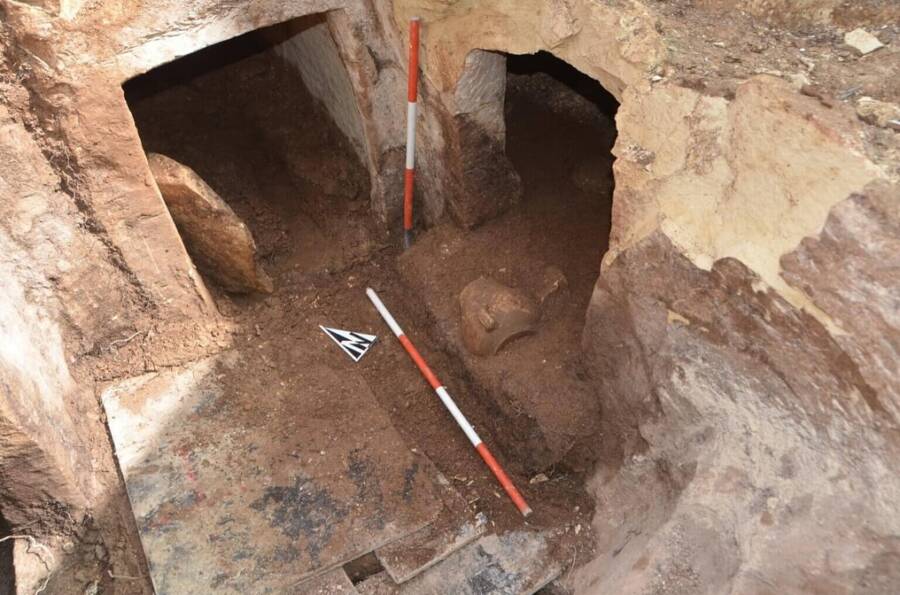
Foundation for Medical ServicesThe central chamber and entrances to two burial tombs unearthed in Birkirkara, Malta.
During construction work at a car park near Mater Dei Hospital in Birkirkara, Malta, workers recently came across an ancient Punic tomb complex. With oversight from the Superintendence of Cultural Heritage (SCH), excavations were then carried out, revealing a structure that dates back 2,300 years.
Experts believe the site was used through the Punic and early Roman periods, offering unique insight and perspectives into the burial practices of the time.
A Punic Tomb Including Skeletal Remains, Cremation Urns, And Other Artifacts Is Uncovered In Malta
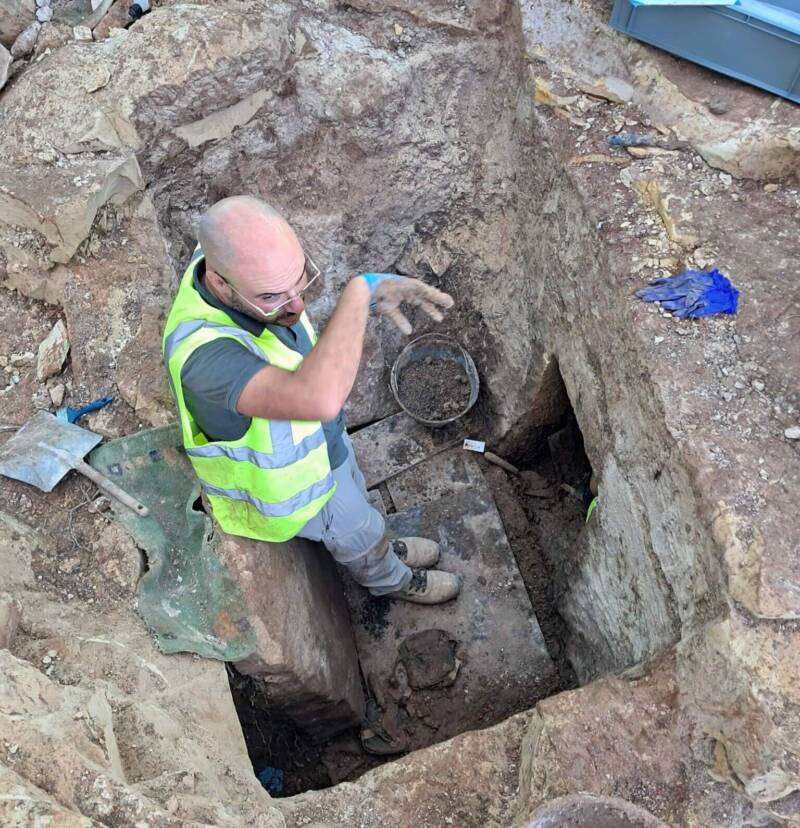
Superintendence of Cultural HeritageWhen archaeologists found the tomb, it was sealed with its original stone slabs dating back 2,300 years.
Initial construction work at the site was being overseen by the Foundation for Medical Services, who were conducting trenching works for a potable water installation, part of a larger road formation project. However, once workers discovered the presence of an ancient tomb complex beneath their feet, members from the SCH joined in to oversee the site and preserve and document any discoveries made.
Excavations revealed three distinct rock-hewn burial chambers, each accessible through a central shaft, a fairly common layout in Punic and Roman burial practices. Each of the three chambers was remarkably still sealed with its original stone slab, which is rare for a tomb of this age. As a result, the site was incredibly well preserved.
Inside the tombs, archaeologists discovered ancient skeletal remains, cremation urns, and various grave goods that had been placed in the chambers.
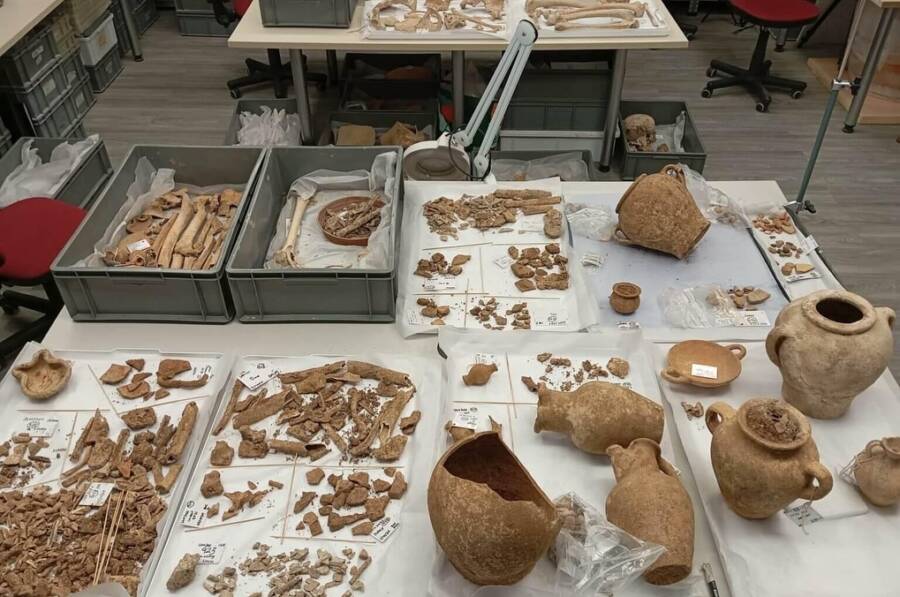
Foundation for Medical ServicesVarious artifacts and grave goods recovered from the Punic tomb found in Malta.
“The findings, which include skeletal remains, cremation urns, and other funerary artifacts, provide a valuable insight into the ancient community that once inhabited the region. Preliminary analysis indicates a Punic timeline, although some artifacts suggest an extended period of use into the early Roman era,” the foundation and SCH said in a joint statement, per Malta Today.
The SCH further reported that the bones seemed to be arranged systematically, possibly indicating that the site was reused at a later date, with the older burials rearranged to make way for new interments. Further analysis of the site and the human remains inside could reveal fascinating new information about burial practices and social structures during the Punic and Roman periods in Malta.
Who Were The Punic People?
The Punic people were the inhabitants of ancient Carthage, a city-state founded by Phoenician settlers from Tyre around 814 B.C.E. in what is now Tunisia. Over time, Carthage became a powerful, independent civilization known for its advanced maritime trade networks, agricultural wealth, and strong navy. The Punic civilization extended its influence throughout the western Mediterranean, establishing trade links with North Africa, Europe, and the Middle East.
Under Carthaginian rule, Malta saw cultural and economic integration with Punic society. The Maltese adopted aspects of Punic culture, including language, art, and religious practices. Temples and shrines dedicated to Punic deities, particularly Astarte and Baal Hammon, were established, and Punic burial practices and artifacts have been found across the islands.
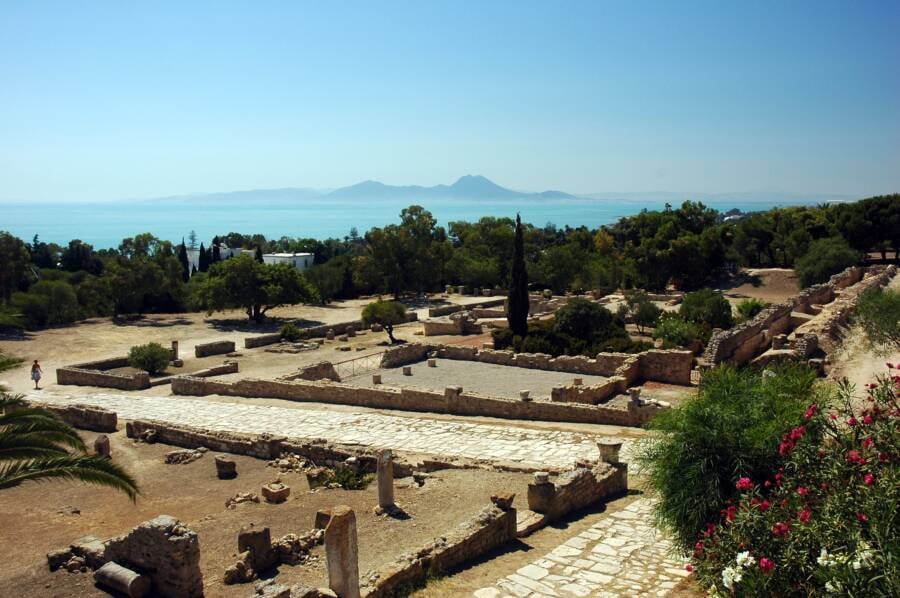
Wikimedia CommonsA portion of the ruins of Carthage, as seen today.
Carthage’s prosperity eventually led to conflict with Rome, sparking the three Punic Wars (264-146 B.C.E.). Punic control of Malta ended after the First Punic War, when Rome began asserting dominance in the region. Eventually, Malta was absorbed into the Roman Empire, and things stayed that way until Rome fell in the 5th century C.E.
In the Second Punic War, the famed Carthaginian general Hannibal invaded Italy and won several battles, though he was ultimately defeated by Rome’s Scipio Africanus. The Third Punic War, however, ended in Carthage’s destruction.
Rome then razed the city and sold its people into slavery, establishing the Roman province of Africa in its place.
Further Analysis Of The Skeletons And Artifacts Found In The Punic Tomb In Malta
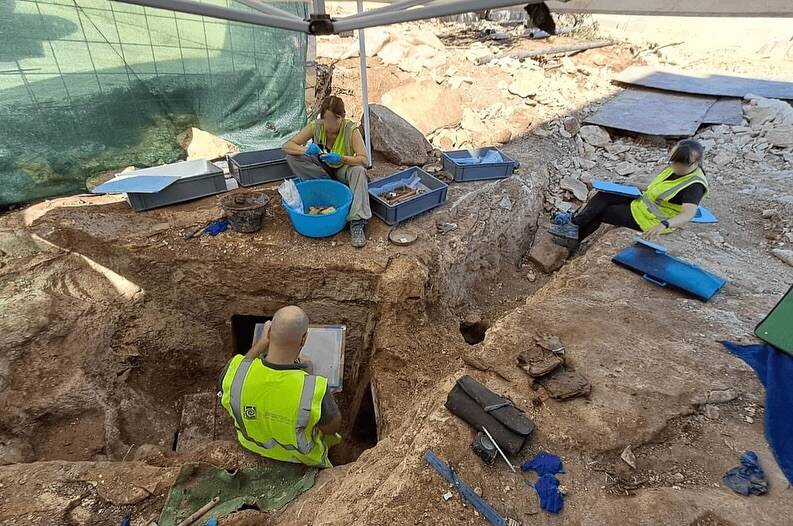
Foundation for Medical ServicesWorkers excavating the Punic tomb complex unearthed in Malta.
For now, a team of archaeologists and osteologists — experts who study the structure and function of the skeleton and bony structures — from the SCH have spent the past few weeks meticulously examining, documenting, and analyzing the discovery. So far, they have found that the contents of each chamber varied, with Chambers Two and Three containing at least six human burials each, while Chamber One seemingly only contains two.
All of the skeletons and grave goods have been removed from the site for further investigation at the SCH lab, where experts will work to clean, preserve, and further document the artifacts and bones. Experts say they will conduct specialized studies to identify the age and sex of the deceased, as well as uncover any pathologies and physical traumas, hopefully painting a clearer picture of the lives and deaths of those buried at the site.

Superintendence of Cultural HeritageThe tomb contains three chambers connected by a central shaft.
With the remains and artifacts safely removed from the site, work on the car park has resumed. However, efforts are underway to ensure that the tomb is preserved in its entirety. The SCH also plans to allow for permanent, controlled access to the site so that it may be studied further down the line.
After reading about the discovery of this Punic tomb complex in Malta, learn about some of the world’s oldest structures — including Malta’s megalithic temples. Then, explore the world’s creepiest catacombs and the stories behind them.





